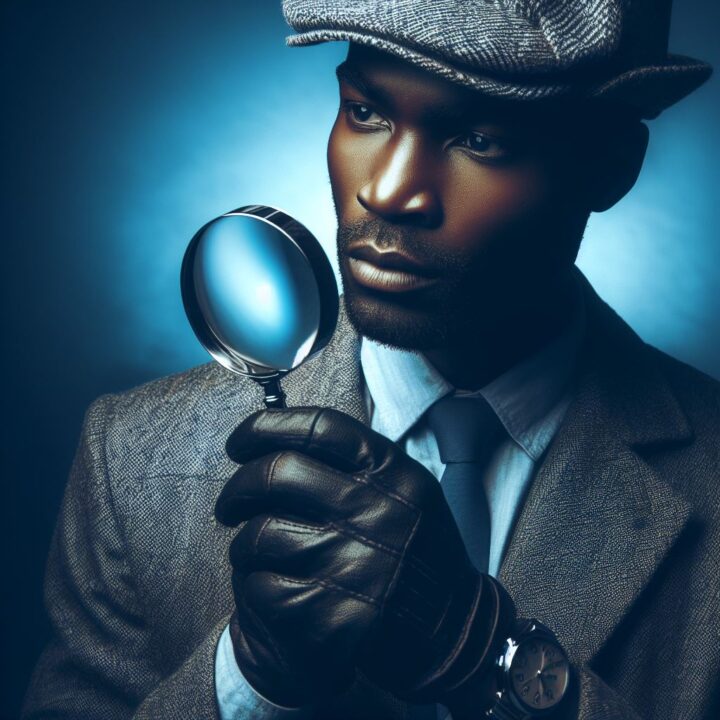It’s no secret that dealing with student loans can feel like navigating a labyrinth. You might feel overwhelmed by the various payment plans, interest rates, and terms you need to understand. But don’t worry! In this article, we’re here to help break down these barriers and provide some useful strategies for taking control of your student loans.
Remember that knowledge is power. Understanding your student loans is the first step towards financial independence.
Understanding your Student Loan
Student loans might seem daunting. But viewing your student loans as an investment in your future is essential. Just like any investment, it’s crucial to understand how it works so you can manage it effectively. Let’s break things down!
Principal and Interest
Your student loan is composed of the principal amount – the total cost of your education, and the interest – the cost of borrowing the money. Remember that you must pay back the principal and the accrued interest sum.
The type of student loan and who your lender is can affect your interest rate. Federal student loans usually offer lower interest rates compared to private loans. Moreover, federal loans offer fixed interest rates, meaning they stay the same over the life of the loan. In contrast, private loans may offer variable interest rates that can increase over time.
Loan Servicers
Think of your loan servicer as your primary point of contact for anything related to your loan. They manage the billing for your loan and can provide you with options for repayment plans and loan forgiveness.
Establishing a good relationship with your loan servicer is important as they’re a valuable resource in your loan repayment journey. Make sure to update your loan servicer with any changes to your contact information so you can take advantage of critical updates.
Understanding Your Repayment Options
The options for repaying your student loan are not “one size fits all.” You’ll likely have multiple plans with varying terms and monthly payment amounts. Some plans could be based on your income and family size, while others could be based on the total amount you owe.
Being proactive about understanding your choices puts you in control of your financial future. So, familiarise yourself with the various repayment options and choose the one that best fits your financial situation. Knowledge is power when it comes to managing student debt!
Well done! Now that you understand the basics of your student loan and how it functions, let’s move on to creating a practical repayment strategy.
Creating a Practical Repayment Plan
Creating a practical repayment plan is the first step in managing and paying off your student loans. This is more than just understanding how much you owe – it’s about devising a realistic method of repayment that won’t leave you struggling financially.
Start by assessing your current income and expenses. Make sure to account for everything, from your housing and food costs to any other debt you might have. That will give you a clear picture of the monthly money you have available for loan repayments.
Here’s a quick guide to creating a solid repayment plan:
- Calculate your Total Monthly Income: Include everything from your paycheck, side hustles, dividends or rentals. The idea is to figure out what comes in every month.
- Outline your Essential Expenses: Make a list of all the unavoidable expenses like rent, utilities, food, insurance, transportation, and so on. Subtracting these from your income will give you an idea of your ‘left-over’ money.
- Determine your Loan Repayment Amount: To find this, check your loan agreement and see your monthly payment. Also, look into options for repayment programs that could lower this amount.
- Create a Budget: Allocate money for the necessities first, then spread the remainder between your loans, savings, and discretionary spending. Sticking to this budget will help ensure you can make consistent loan payments.
- Review and Adjust: Circumstances change, and so do incomes and expenses. Regularly reviewing your plan will help keep it relevant and practical.
Creating a practical repayment plan is a dynamic process, not a one-and-done deal. It requires consistent reflection and adjustment to keep it applicable to your current situation. And remember, it’s crucial to prioritise your student loan alongside developing good overall financial habits.
But even with the best plan, sometimes you might need help to make ends meet. Don’t panic. There are options available to you, like choosing a different repayment plan or refinancing your loan. We’ll cover these in the next sections.
Using Federal Programs and Forgiveness Options carries the student loan debt burden. It’s important to know that there are options out there that can help reduce the load. Several federal programs and forgiveness options are specifically designed to help manage and ultimately eliminate your student loan debt.
Income-Based Repayment Plans
An income-based repayment plan might be a good fit for you. These plans determine your monthly student loan payment based on income and family size. Your monthly payment could be as low as zero dollars if you qualify.
Public Service Loan Forgiveness
Work in a qualifying public service job and have made 120 qualifying payments on your student loans. You may be eligible to have the remaining balance of your loan forgiven through Public Service Loan Forgiveness (PSLF). While this could be extraordinarily beneficial if you’re eligible, be aware that it’s difficult to qualify for PSLF.
Teacher Loan Forgiveness
Teachers with certain types of student loans may qualify for Teacher Loan Forgiveness. After completing five full and consecutive academic years of teaching in a low-income school or educational service agency, you could have up to $17,500 of your student loan debt forgiven.
Discharge Due to Death or Disability
Suppose the student loan borrower dies or becomes permanently disabled. In that case, federal student loans will be discharged, and you will no longer be obligated to make payments.
Exploring these possibilities can seem daunting. Talking to your loan servicer, reviewing your options carefully, and understanding the implications before deciding is essential. Every small step you take towards understanding your finances better is a step in the right direction.
Refinancing and Consolidation Insights
Refinancing and consolidating your student loans can be a game-changer in your journey to becoming debt-free. But how exactly do these processes work? Let’s dive in to unravel the ambiguity.
Loan Refinancing
When you refinance your student loans, you essentially take out a new loan with a different lender, which is then used to pay off your existing loans. Here’s what you need to know:
- The new loan often comes with better terms, a lower interest rate or a different repayment period, saving you money in the long run.
- Most private lenders require a strong credit history and a stable income to approve refinancing.
- Refinancing federal loans means you’ll lose access to federal loan benefits, like income-based repayment options and loan forgiveness programs, so tread carefully.
Loan Consolidation
On the other hand, consolidation involves combining multiple federal student loans into a single loan—the Direct Consolidation Loan. A few points to keep in mind:
- A consolidated loan simplifies your monthly payments by having you pay a single lender instead of multiple ones.
- Your interest rate will be the weighted average of your previous loans, rounded up to the nearest one-eighth of a per cent, meaning you might pay slightly more interest.
- Consolidation may give you access to additional loan repayment plans or forgiveness programs.
Both options have pros and cons, so thoroughly analyse your financial situation and long-term goals before deciding. Understanding how these processes work is the key to making your best choice.
Your Action Plan
So, here’s your strategy. Start by comparing the terms of your current loans to current refinancing rates. Look at potential savings and consider which federal benefits you might lose. Next, evaluate whether consolidation can simplify and lower your monthly payments while keeping total costs in check. Remember, the best choice is the one that helps you strike a balance between manageable monthly payments and total repayment costs.
Setting Financial Goals for Successful Debt Management
Effective student loan management hinges on clear, manageable financial goals. To successfully conquer your debt, you need to understand the power of goal setting. You would only start a road trip with a destination in mind, would you? Paying off your student loans is certainly a journey, and without solid financial goals, you may find yourself stalled on the side of the road.
A clear vision, backed by definite plans, gives you a tremendous feeling of confidence and personal power.” – Brian Tracy, Public Speaker & Self-Development Author.
The good news is setting financial goals can be manageable. Approach it as a step-by-step process:
- Figure out what you owe: Open up all those dreaded loan statements and get a clear picture of how much you owe on your student loans.
- Prioritise your loans: If you have multiple loans, determine which ones must be paid off first. High-interest loans should generally be at the top of your list.
- Set realistic payoff dates: Establish a time frame for paying off each loan. Be ambitious, but also allow flexibility to adjust as life circumstances change.
- Create a manageable budget: With your repayment plan in mind, create a budget that allows for your loan payments, living expenses, and a small cushion for unexpected costs.
- Save and invest: Don’t let student loans deter you from starting to save or invest. Even if it’s a small amount, getting into the habit as soon as possible is vital to long-term financial health.
We’re all human, and sticking to financial goals can be hard. Here’s a little trick: Frame your goals positively. Instead of thinking, “I need to cut back on eating out so I can pay off my student loans,” try review, “I’m choosing to cook more meals at home to speed up my loan repayment.”
The key is to remember: Every penny you save and put toward your loans is a step closer to financial freedom. You’ve got this!
Utilising Technology and Apps to Track and Manage Loan Payments
When we talk about managing your student loan repayments, let’s remember the golden rule – stay organised. And what better way to keep everything in order than to leverage the technology at your fingertips? The good news is you’re not alone in this, and there are quite a few useful apps and digital tools out there built specifically for loan tracking and management.
Mint is a popular budgeting app that allows you to keep an eye on all your financial accounts in one place, including your student loans. Its friendly and intuitive interface lets you easily track your loan balance, monthly payments, and overall repayment progress.
Remember, using an app does not replace your responsibility to make timely payments. Still, it can make the task easier and more efficient. You’re leveraging technology for a smoother pathway towards financial freedom.
Next up is Student Loan Hero. This digital tool offers personalised loan tracking and repayment options based on your financial situation. It also provides valuable information on loan repayment strategies and tips!
Lastly, check out Loan Buddy. This app tracks your student loans, analyses your situation, and matches you with potential loan forgiveness programs you may qualify for.
Moreover, most loan servicers offer online portals and mobile apps as well. They offer features such as autopay, payment reminders, and a comprehensive view of your loan details. However, always use these with neutral third-party apps for a full picture and the most effective repayment strategy, as these servicer apps only provide information about their specific loans.
One essential thing to remember is always to ensure your financial information is secure when using any online tool. Check the app’s or website’s security features and privacy policies before inputting your information.
In conclusion, apps and digital tools provide an effortless way to track and manage student loans. They bring all your loan data in one place, provide timely reminders, suggest effective repayment strategies, and even offer potential forgiveness options based on your unique situation. So, use technology to your advantage and breathe a sigh of relief in your student loan journey.
Get informed on how to do more with your money.





